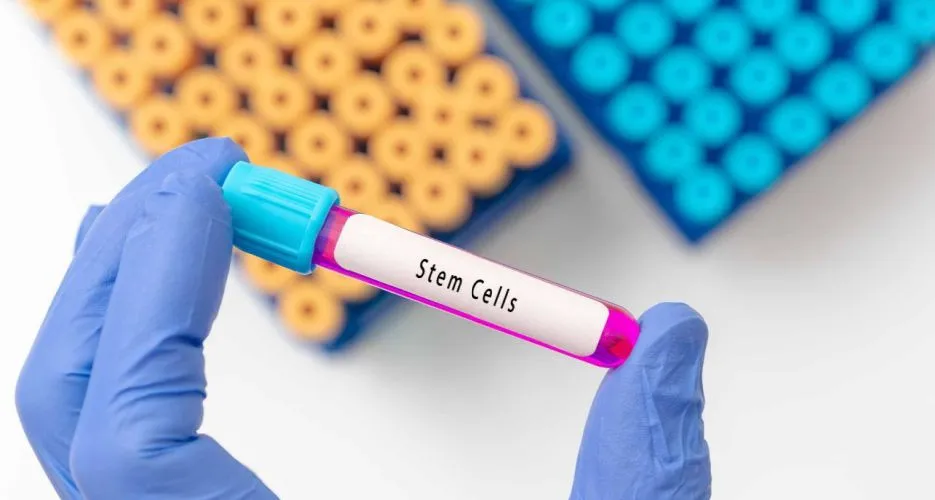New CLL Discovery: Deletion of MGA Gene and Richter's Transformation

Richter's transformation (RT) is a rare occurrence for chronic lymphocytic leukemia (CLL) patients. It involves the patient’s CLL evolving into a more aggressive form of lymphoma. Because of the difficult-to-treat nature of Richter's transformation, researchers have been actively looking for causes and new medicine options for this patient population.
Causes of CLL to Richter’s Transformation
Dr. Lili Wang and her colleagues at the City of Hope National Comprehensive Cancer Center found links between issues with the MGA gene causing CLL cells to undergo Richter’s transformation.
In CLL patients, MGA gene problems are not very common, typically affecting only 3% of patients. 36% of CLL patients who experience Richter's transformation have problems with the MGA gene.
Dr. Wang’s research found:
- When the MGA gene is deactivated or deleted, this increases the CLL cell’s ability to produce more energy within its mitochondria, allowing the cell to multiply more quickly than before, leading to faster disease progression
- The MGA gene works with another gene called Nme1 to control how mitochondria work. This is important because mitochondria help cancer cells grow quickly
- Without MGA, a gene called MYC becomes more active. MYC helps cells grow and divide, so when MYC is too active, cancer can get worse more quickly
Knowing this information helps researchers look for new medicines that can target these genes and slow down cancer growth. This is helpful as Richter’s transformation patients have previously had a poor prognosis, with patients having an average survival of one year, and even with the first-generation BTK inhibitor ibrutinib (Imbruvica), this figure only extended an additional four months. The aggressive nature of Richter’s transformation highlights the urgent need for effective treatment options.
New Medicines for Richter’s Transformation
This study has resulted in the exploration of two medicines TTFA and AZ5576, to treat Richter’s transformation cells. These medicines attack different parts of how cells make energy. When given to mice with Richter’s transformation, they helped them live longer and made their spleens smaller, which is a sign of the disease getting better. Another interesting finding was that using the medicines together worked better than when used on their own.
Conclusion
Dr. Wang and her team’s research about how Richter’s transformation is influenced by genes like MGA, Nme1, and MYC, points to new treatment options for slowing down the rapid growth of cancer cells by targeting these genetic interactions. The development of new medicines like TTFA and AZ5576, which have shown positive results in treating mice with Richter’s transformation, is a hopeful sign. These medicines, especially when used together, could lead to more effective treatment options for Richter’s transformation patients.
Richter's transformation (RT) is a rare occurrence for chronic lymphocytic leukemia (CLL) patients. It involves the patient’s CLL evolving into a more aggressive form of lymphoma. Because of the difficult-to-treat nature of Richter's transformation, researchers have been actively looking for causes and new medicine options for this patient population.
Causes of CLL to Richter’s Transformation
Dr. Lili Wang and her colleagues at the City of Hope National Comprehensive Cancer Center found links between issues with the MGA gene causing CLL cells to undergo Richter’s transformation.
In CLL patients, MGA gene problems are not very common, typically affecting only 3% of patients. 36% of CLL patients who experience Richter's transformation have problems with the MGA gene.
Dr. Wang’s research found:
- When the MGA gene is deactivated or deleted, this increases the CLL cell’s ability to produce more energy within its mitochondria, allowing the cell to multiply more quickly than before, leading to faster disease progression
- The MGA gene works with another gene called Nme1 to control how mitochondria work. This is important because mitochondria help cancer cells grow quickly
- Without MGA, a gene called MYC becomes more active. MYC helps cells grow and divide, so when MYC is too active, cancer can get worse more quickly
Knowing this information helps researchers look for new medicines that can target these genes and slow down cancer growth. This is helpful as Richter’s transformation patients have previously had a poor prognosis, with patients having an average survival of one year, and even with the first-generation BTK inhibitor ibrutinib (Imbruvica), this figure only extended an additional four months. The aggressive nature of Richter’s transformation highlights the urgent need for effective treatment options.
New Medicines for Richter’s Transformation
This study has resulted in the exploration of two medicines TTFA and AZ5576, to treat Richter’s transformation cells. These medicines attack different parts of how cells make energy. When given to mice with Richter’s transformation, they helped them live longer and made their spleens smaller, which is a sign of the disease getting better. Another interesting finding was that using the medicines together worked better than when used on their own.
Conclusion
Dr. Wang and her team’s research about how Richter’s transformation is influenced by genes like MGA, Nme1, and MYC, points to new treatment options for slowing down the rapid growth of cancer cells by targeting these genetic interactions. The development of new medicines like TTFA and AZ5576, which have shown positive results in treating mice with Richter’s transformation, is a hopeful sign. These medicines, especially when used together, could lead to more effective treatment options for Richter’s transformation patients.

about the author
Megan Heaps
Megan joined HealthTree in 2022. She enjoys helping patients and their care partners understand the various aspects of the cancer. This understanding enables them to better advocate for themselves and improve their treatment outcomes.
More on Treatment Advances
Trending Articles

Get the Latest Chronic Lymphocytic Leukemia Updates, Delivered to You.
By subscribing to the HealthTree newsletter, you'll receive the latest research, treatment updates, and expert insights to help you navigate your health.
Together we care.
Together we cure.
3x Faster.










